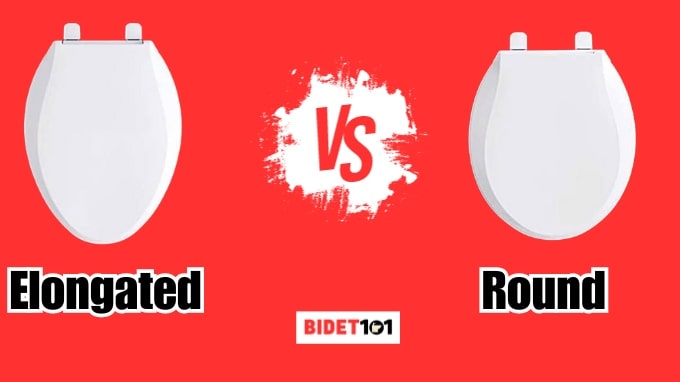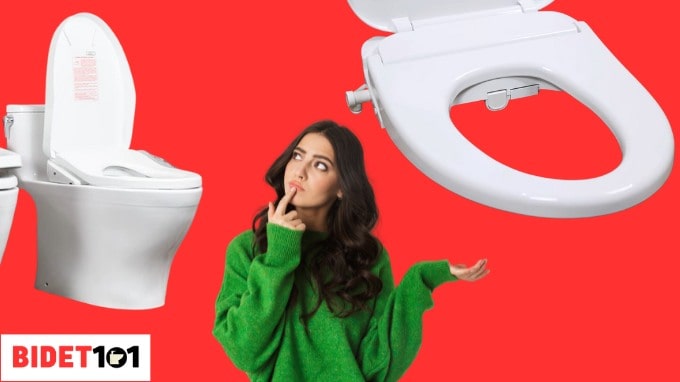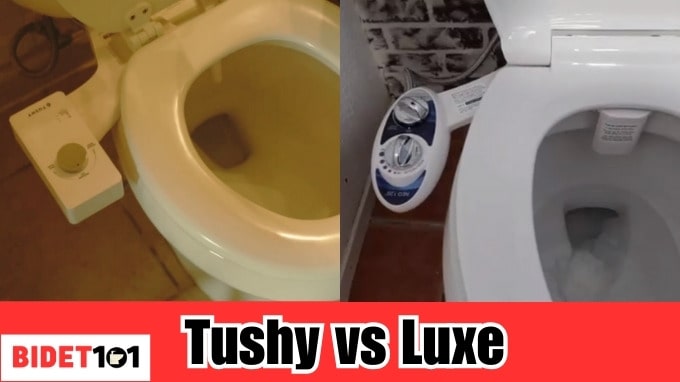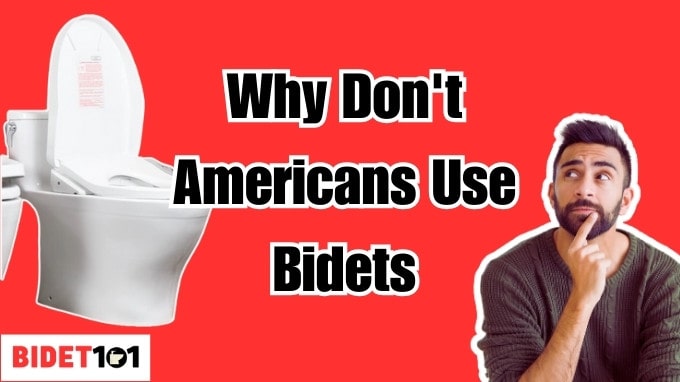In the realm of modern bathroom innovations, a surprising solution has emerged – bidets and washlets. While these names might conjure images of luxury or complexity, they address a common concern shared by many: maintaining hygiene and comfort in a sustainable and efficient manner.
Today we will dive in the world of bidets and washlets, offering a clear path to understanding their benefits, drawbacks, and how they can make a meaningful impact on your daily routine. By the time you finish reading, you’ll be well-equipped to make an informed decision about whether these eco-friendly alternatives are the right fit for you.
What is Bidets and Washlets
Bidets and washlets revolutionize the way we approach personal hygiene, offering alternatives to conventional toilet paper. Let’s delve into the essence of these two innovations and understand how they differentiate from traditional toilets.
Bidets: A bidet is a standalone fixture designed to facilitate personal cleansing after using the toilet. It comes in two main models: one that sprays water from front to back and another that sprays water upwards from the base of the fixture. Bidets require dedicated space in the bathroom and follow space planning regulations similar to toilets. Typically, 30 inches of space is needed for either a toilet or bidet, with an additional 6 inches for comfort. To have both a toilet and bidet adjacent to each other, a minimum of 60 inches of space is recommended.
READE MORE: Bidet vs Toilet Paper
Washlets: A washlet, also known as a bidet toilet seat, is a cutting-edge alternative to traditional toilet seats. Unlike bidets, washlets do not necessitate additional space, as they replace your existing toilet seat. They offer a wide array of features, including heated seats, warm air drying, customizable wash settings, automatic opening and closing seats, and even built-in deodorizers and MP3 players. Installation of a washlet is relatively straightforward and can be done in a matter of minutes. It involves attaching the seat to your toilet and connecting it to a GFCI outlet for power.
In essence, bidets stand alone as separate fixtures, while washlets seamlessly integrate into your existing toilet setup, enhancing comfort and cleanliness. The choice between these options depends on your bathroom layout, preferences, and desire for advanced features. As we move forward, we’ll explore the advantages and disadvantages of both bidets and washlets to help you make an informed decision.
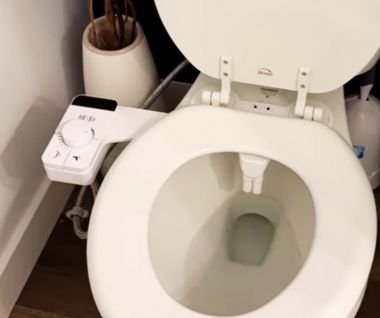
Benefits of Bidets:
Bidets bring several advantages that make them a smart choice for enhancing your bathroom routine. These perks ensure a more comfortable and eco-friendly way to stay clean and fresh.
- Adjustable Water Temperature and Pressure: Bidets let you customize the temperature and water pressure to your liking. This means you can enjoy a gentle and tailored cleaning experience that suits your preferences.
- Savings on Toilet Paper Costs: Bidets reduce your reliance on toilet paper, which can save you money over time. You’ll use less or even no toilet paper after using the bidet, leading to less waste and lower expenses.
- Comfort and Health Benefits: Bidets are especially helpful if you have specific health concerns. They provide a gentle and effective cleansing method that’s great for sensitive skin or discomfort. You can adjust the water pressure and temperature to make it soothing and just right for you.
Drawbacks of Bidets:
While bidets have their benefits, there are some downsides to consider before making your decision.
Need for Extra Space: Bidets require more room in your bathroom as they are standalone fixtures. This might be a challenge in smaller bathrooms where space is tight. It’s important to ensure your bathroom can accommodate a bidet comfortably.
Higher Installation Costs: Installing a bidet involves extra plumbing work and can be more expensive. The process takes longer and can add to the overall cost of the fixture.
Transition from Toilet to Bidet: Using a bidet means moving from the toilet to the bidet for cleaning. This process might be less straightforward, especially for those with mobility issues. Additionally, bidets are lower than toilets, which can be less convenient for some users.
Now that we’ve explored the pros and cons of bidets, let’s move on to understanding the advantages and disadvantages of washlets, another popular option for upgrading your bathroom experience.
Benefits of Washlets:
Washlets offer some pretty nifty perks that can make your bathroom experience more enjoyable and planet-friendly. Let’s dive into these advantages:

- Easy Integration and Space Saving: Washlets fit right onto your existing toilet, saving you space and the need for extra fixtures. This is especially handy for bathrooms that are a bit tight on the room.
- Cool Features for Extra Comfort: Washlets come with cool extras like heated seats, warm air drying, and customizable settings. These features let you personalize your toilet time and add a touch of luxury to your routine.
- Savings on Toilet Paper: With a washlet, you can say goodbye to using lots of toilet paper. That means less money spent on TP and less waste piling up in landfills.
- Eco-Friendly Option: By cutting down on toilet paper use, washlets are kinder to the environment. They also use water more efficiently, so you’re being planet-conscious while staying clean.
Drawbacks of Washlets:
But hold on a sec, there are a few things you might want to consider before committing to a washlet:
- Power Outlet Dependency: Washlets need an electrical outlet nearby to work. This means you have to make sure there’s a plug in the right spot. No outlet, no washlet action.
- Chilly Water Situations: The water in washlets comes from your toilet’s water supply, so it might be a bit on the chilly side. Some washlets have heaters for warm water, but these can sometimes act up.
- Price Range Variability: Washlets come in different flavors, and that means prices vary. The more bells and whistles you want, the higher the cost. So, it’s important to find one that fits your budget and needs.
Okay, now that we’ve looked at the ups and downs of both bidets and washlets, it’s time to help you make a smart choice for your bathroom upgrade. Stay tuned for our tips on choosing the best fit for your personal preferences and bathroom setup.
Comparing Installation and Costs:
Now, let’s talk about the nitty-gritty of getting these bathroom buddies set up in your space. Here’s a side-by-side look at installation and costs for bidets and washlets:
Bidets: A Plumbing Puzzle
When it comes to bidets, you’re in for a bit of a plumbing adventure. Bidets need professional hands for installation, mainly because they require adjustments to your existing plumbing. This means hiring a plumber to work their magic.
Washlets: DIY-Friendly with an Electrical Twist
On the other hand, washlets are DIY champs. You can easily install them yourself in just a few minutes. However, there’s a small catch – they need access to an electrical outlet nearby. So, if you’re good with plugging things in, you’re good to go.
Let’s Talk Money:
Now, let’s get down to the cold, hard cash. Bidets typically come with higher installation costs due to the plumbing jigsaw puzzle. This can easily double the price tag on your bidet adventure. Plus, some high-end bidets might even require more cash for designer styles and colors.
Washlets, on the other hand, have a more budget-friendly installation scenario. Since you can DIY it, you’ll save on professional installation fees. But remember, you might need an electrician to help you set up that outlet.
Savings for the Long Haul:
Okay, so you’re spending some bucks upfront, but what about the long-term savings? Both bidets and washlets are water-efficient, using way less H2O than the TP you’d use. Plus, they reduce the need for TP, saving you money on rolls over time.
In a nutshell, while bidets can hit you with a higher initial investment, washlets are more wallet-friendly from an installation perspective. The choice is yours – do you want to go big at the start or save up over time? Either way, your bottom line and the environment will thank you!
Comfort and User Experience:
Now, let’s focus on the cozy side of things – your comfort while using these bathroom upgrades.
Washlets: A Comfort Oasis
Washlets are like a spa day for your toilet routine. They come with a bunch of fancy features, like heated seats that make your experience warm and inviting. Plus, you can customize the way the water spray hits you, ensuring it’s just the way you like it. Talk about tailored comfort!
Bidets: A Height Hindrance
While bidets are doing their cleaning magic, they might not be the comfiest for everyone. Here’s why: bidets can be a bit on the low side. This can make things tricky for folks with mobility issues. Getting on and off might require some extra effort, which isn’t always the best if you’re looking for a seamless and smooth experience.
So, when it comes to comfort, washlets take the lead with their heated seats and adjustable sprays. But hey, comfort is a personal thing – make sure to pick the option that feels just right for you!
Health and Hygiene Considerations:
Now, let’s talk about the nitty-gritty of health and hygiene – two things we all care about when it comes to the bathroom.
Bidets and Washlets: Health Heroes
Here’s the deal: both bidets and washlets can be your secret weapon against pesky bacteria. How? By using water instead of paper, they help reduce the risk of bacterial contamination. That’s a win for your hygiene game!
But wait, there’s more. These bathroom buddies could also be your allies in preventing some uncomfortable conditions. Think about it: bidets and washlets might just be the ticket to saying goodbye to things like hemorrhoids and urinary tract infections. And who wouldn’t want that?
Expert Insights: Gastroenterologist’s Take
You know who’s on board with water-based cleaning? Gastroenterologists – those doctors who know their stuff about digestive health. According to them, using water for cleaning in the bathroom can be a game-changer. Why? Well, it’s like this: wiping with dry toilet paper can sometimes spread bacteria around, leading to irritation and infections. But water? It washes bacteria away. So, if you’re looking out for your bottom’s well-being, you might want to consider what the experts have to say.
In a nutshell, bidets and washlets aren’t just about luxury – they’re about looking out for your health and keeping you feeling fresh and clean.
Environmental Impact:
Now, let’s talk about the planet. Yes, you read that right – bidets and washlets have an environmental side that’s worth considering.
A Greener Choice
Picture this: every time you use a bidet or washlet, you’re making a small but meaningful difference. How? By saying goodbye to toilet paper, you’re cutting down on paper usage. And that’s a big deal for our forests and the environment. So, if you’re looking to reduce your carbon footprint, these bathroom buddies have your back.
Water-wise Warriors
But what about water usage? Aren’t bidets and washlets water hogs? Actually, no. They’re surprisingly water-wise. You see, bidets and washlets use just a fraction of the water you’d need to flush a toilet. That means you’re not just saving paper, but also conserving water with every clean. And that’s a win-win for you and the planet.
So, when you choose bidets or washlets, you’re not just investing in your comfort – you’re also making a small yet impactful step towards a greener and more eco-friendly lifestyle.
Making the Right Choice:
So, now that we’ve laid out all the details, let’s help you make the right decision for your bathroom and lifestyle. Both bidets and washlets have their strengths and weaknesses, and it ultimately boils down to what works best for you.
Weighing the Options
Bidets offer adjustable water temperature and pressure, potentially saving you money on toilet paper in the long run. They can be especially comfortable for individuals with specific health conditions. However, keep in mind that bidets require additional bathroom space and might come with higher installation costs.
On the other hand, washlets bring convenience by integrating seamlessly with your existing toilet, saving precious bathroom space. With features like heated seats, customizable sprays, and potential cost savings on paper, they’re a popular choice. Just remember that washlets need access to an electrical outlet and rely on a cold water supply, which might not always guarantee warm water.
Personal Preferences Matter
When making your choice, think about what matters most to you. Do you value customization and comfort? Are you conscious of your environmental impact? Consider factors like your bathroom layout, budget, and your own preferences.
Ultimately, whether you opt for the bidet’s adjustable cleansing experience or the washlet’s space-saving convenience, both choices are steps towards a cleaner, more comfortable, and eco-friendly bathroom routine. It’s all about finding the right fit for you and your space. Happy choosing!
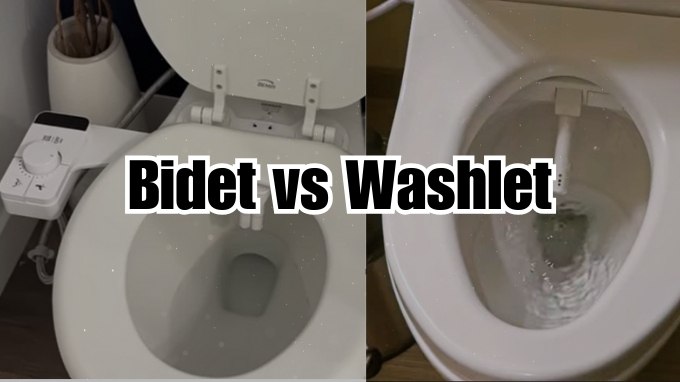
Conclusion:
In conclusion, bidets and washlets offer modern solutions that not only provide a hygienic and comfortable bathroom experience but also contribute to a more sustainable world. By reducing paper usage and incorporating water-saving features, both options showcase their eco-friendly nature.
As you embark on your decision-making journey, remember that there’s a wide range of models and features available for both bidets and washlets. It’s worth exploring these options to find the one that aligns perfectly with your needs and preferences.
If you find yourself unsure about which direction to take, don’t hesitate to consult professionals who can provide expert advice tailored to your situation. Whether you’re focused on reducing your carbon footprint, seeking added comfort, or simply looking for a more efficient cleansing routine, bidets and washlets have something to offer.
In the end, the choice is yours to make. As you weigh the benefits, drawbacks, and your own requirements, trust that you’re making a decision that suits your lifestyle and contributes positively to your daily routine. Both bidets and washlets represent steps towards a cleaner, more convenient, and environmentally conscious way of using the bathroom. Happy exploring!
Frequently Asked Questions (FAQ):
Why do Westerners not use bidets?
Bidets have not been widely adopted in American culture. One suggested reason for this hesitance is that bidets were historically associated with brothels and emergency contraception, contributing to their limited popularity in Western societies.
Why don't the French use bidets?
While bidets were common fixtures in French bathrooms until a few decades ago, they have become less prevalent. This shift is attributed to factors like space constraints in homes and the increasing popularity of showers. The bidet’s decline has been linked to it being perceived as old-fashioned or undesirable, even though it still maintains a presence in some households, particularly in Italy.
Feel free to ask any questions you have about bidets and washlets, and we’ll be happy to provide you with more information!
Resource:

